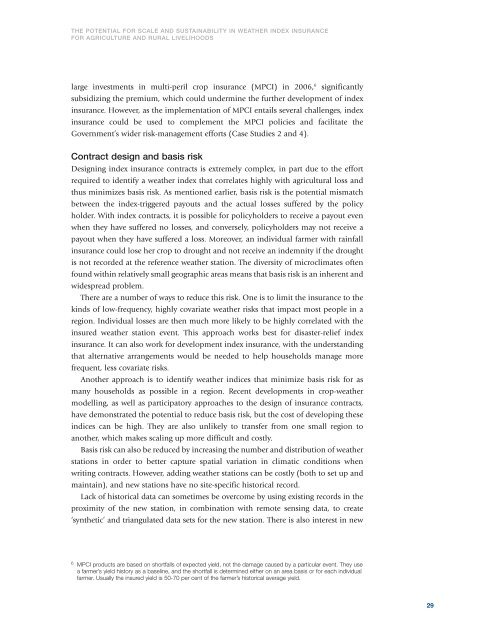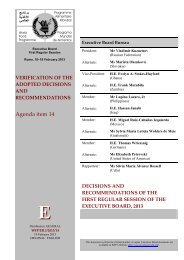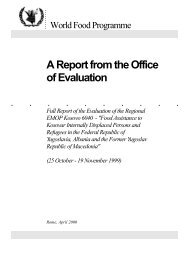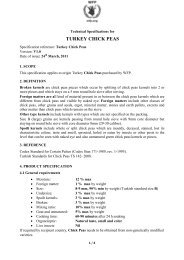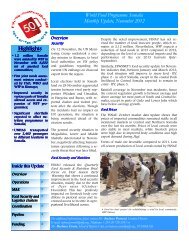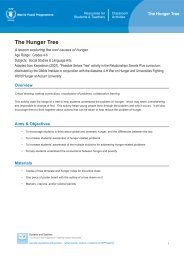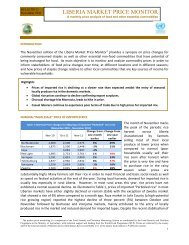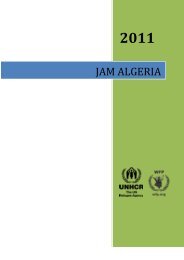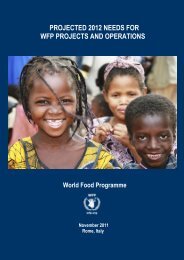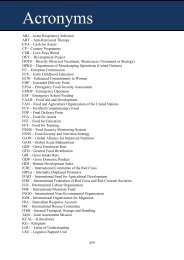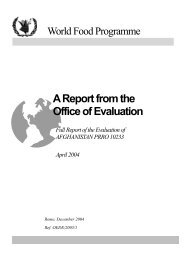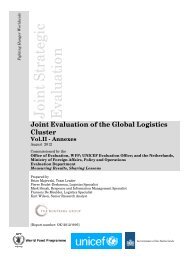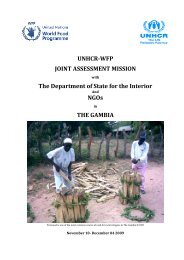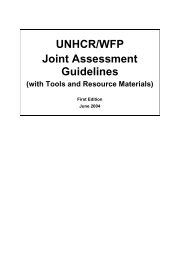The Potential for Scale and Sustainability in Weather Index Insurance
The Potential for Scale and Sustainability in Weather Index Insurance
The Potential for Scale and Sustainability in Weather Index Insurance
You also want an ePaper? Increase the reach of your titles
YUMPU automatically turns print PDFs into web optimized ePapers that Google loves.
THE POTENTIAL FOR SCALE AND SUSTAINABILITY IN WEATHER INDEX INSURANCE<br />
FOR AGRICULTURE AND RURAL LIVELIHOODS<br />
large <strong>in</strong>vestments <strong>in</strong> multi-peril crop <strong>in</strong>surance (MPCI) <strong>in</strong> 2006, 6 significantly<br />
subsidiz<strong>in</strong>g the premium, which could underm<strong>in</strong>e the further development of <strong>in</strong>dex<br />
<strong>in</strong>surance. However, as the implementation of MPCI entails several challenges, <strong>in</strong>dex<br />
<strong>in</strong>surance could be used to complement the MPCI policies <strong>and</strong> facilitate the<br />
Government’s wider risk-management ef<strong>for</strong>ts (Case Studies 2 <strong>and</strong> 4).<br />
Contract design <strong>and</strong> basis risk<br />
Design<strong>in</strong>g <strong>in</strong>dex <strong>in</strong>surance contracts is extremely complex, <strong>in</strong> part due to the ef<strong>for</strong>t<br />
required to identify a weather <strong>in</strong>dex that correlates highly with agricultural loss <strong>and</strong><br />
thus m<strong>in</strong>imizes basis risk. As mentioned earlier, basis risk is the potential mismatch<br />
between the <strong>in</strong>dex-triggered payouts <strong>and</strong> the actual losses suffered by the policy<br />
holder. With <strong>in</strong>dex contracts, it is possible <strong>for</strong> policyholders to receive a payout even<br />
when they have suffered no losses, <strong>and</strong> conversely, policyholders may not receive a<br />
payout when they have suffered a loss. Moreover, an <strong>in</strong>dividual farmer with ra<strong>in</strong>fall<br />
<strong>in</strong>surance could lose her crop to drought <strong>and</strong> not receive an <strong>in</strong>demnity if the drought<br />
is not recorded at the reference weather station. <strong>The</strong> diversity of microclimates often<br />
found with<strong>in</strong> relatively small geographic areas means that basis risk is an <strong>in</strong>herent <strong>and</strong><br />
widespread problem.<br />
<strong>The</strong>re are a number of ways to reduce this risk. One is to limit the <strong>in</strong>surance to the<br />
k<strong>in</strong>ds of low-frequency, highly covariate weather risks that impact most people <strong>in</strong> a<br />
region. Individual losses are then much more likely to be highly correlated with the<br />
<strong>in</strong>sured weather station event. This approach works best <strong>for</strong> disaster-relief <strong>in</strong>dex<br />
<strong>in</strong>surance. It can also work <strong>for</strong> development <strong>in</strong>dex <strong>in</strong>surance, with the underst<strong>and</strong><strong>in</strong>g<br />
that alternative arrangements would be needed to help households manage more<br />
frequent, less covariate risks.<br />
Another approach is to identify weather <strong>in</strong>dices that m<strong>in</strong>imize basis risk <strong>for</strong> as<br />
many households as possible <strong>in</strong> a region. Recent developments <strong>in</strong> crop-weather<br />
modell<strong>in</strong>g, as well as participatory approaches to the design of <strong>in</strong>surance contracts,<br />
have demonstrated the potential to reduce basis risk, but the cost of develop<strong>in</strong>g these<br />
<strong>in</strong>dices can be high. <strong>The</strong>y are also unlikely to transfer from one small region to<br />
another, which makes scal<strong>in</strong>g up more difficult <strong>and</strong> costly.<br />
Basis risk can also be reduced by <strong>in</strong>creas<strong>in</strong>g the number <strong>and</strong> distribution of weather<br />
stations <strong>in</strong> order to better capture spatial variation <strong>in</strong> climatic conditions when<br />
writ<strong>in</strong>g contracts. However, add<strong>in</strong>g weather stations can be costly (both to set up <strong>and</strong><br />
ma<strong>in</strong>ta<strong>in</strong>), <strong>and</strong> new stations have no site-specific historical record.<br />
Lack of historical data can sometimes be overcome by us<strong>in</strong>g exist<strong>in</strong>g records <strong>in</strong> the<br />
proximity of the new station, <strong>in</strong> comb<strong>in</strong>ation with remote sens<strong>in</strong>g data, to create<br />
‘synthetic’ <strong>and</strong> triangulated data sets <strong>for</strong> the new station. <strong>The</strong>re is also <strong>in</strong>terest <strong>in</strong> new<br />
6 MPCI products are based on shortfalls of expected yield, not the damage caused by a particular event. <strong>The</strong>y use<br />
a farmer’s yield history as a basel<strong>in</strong>e, <strong>and</strong> the shortfall is determ<strong>in</strong>ed either on an area basis or <strong>for</strong> each <strong>in</strong>dividual<br />
farmer. Usually the <strong>in</strong>sured yield is 50-70 per cent of the farmer’s historical average yield.<br />
29


